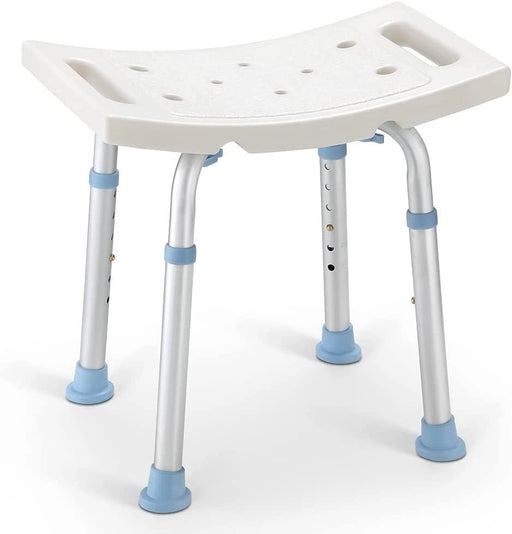
Proper Height for Walkers
Walking aids, like walkers, are designed to provide support and stability for individuals experiencing mobility issues. But how do you determine the proper height for a walker? Let's delve into the details and make this easier for you.
Why Walker Height Matters
Before we dive into the 'how', let's first discuss the 'why'. Walker height is crucial because it directly influences comfort, safety, and mobility efficiency.
A walker set too low can lead to hunched posture, causing back and shoulder discomfort. Conversely, a too-high walker can be unwieldy, compromising safety and balance. Therefore, it's essential to get it just right.
A Step-by-step Guide: Adjusting Your Walker to the Proper Height
The general proper height for walkers is this:
Place the walker's handles by your sides, and ensure they align with the crease of your wrist when your arms hang naturally. Your elbows should be slightly bent (about 15-20 degrees) when you grip the handles.
Now, onto the meat of the matter—adjusting your walker to the ideal height. Let's break it down into digestible, easy-to-follow steps.
-
Stand Tall: Stand up straight with your regular, comfortable shoes on. Good posture is vital here as it forms the basis for the correct walker height.
-
Position the Walker: Place the walker's handles by your sides. The top of the handle should align with the crease of your wrist when your arms hang down naturally.
-
Check Your Elbow Bend: Your elbows should be slightly bent (about 15-20 degrees) when you hold the walker's handles. This provides optimal support while facilitating comfortable movement.
-
Adjust as Necessary: If the walker's height doesn't meet these criteria, adjust it. Most walkers have push buttons or twist knobs for easy adjustment.
Remember, these are general guidelines. Individual needs can vary, so don't hesitate to consult a healthcare professional if unsure.
Let's delve into specifics based on the type of walker.
Proper Height for Standard Walker
Standard walkers, also known as pick-up walkers, have four legs and no wheels. Adjust the height so the handles reach your wrist crease. When you grip the handles, your elbows should have a slight bend.
Proper Height for Two-Wheel Walker
Two-wheel walkers have wheels on the front two legs and caps on the back. The height adjustment process is similar to the standard walker. Ensure your wrists align with the top of the handles when standing upright.

Proper Height for Three-Wheel Walker
Three-wheel walkers, due to their triangular design, offer greater maneuverability. Adjust the handles to the crease of your wrist. This ensures you can comfortably control the walker without stooping or overextending your arms.

Proper Height for Rollator Walker
Rollator walkers are equipped with four wheels and brakes. They often come with a seat. Make sure the handle height allows for a slight elbow bend when you grip them. Also, when sitting, your feet should be flat on the ground and your knees at a right angle.

Proper Height for Upright Walker
Upright walkers are designed to help users maintain a more natural, upright posture. Handle height should allow your elbows to bend slightly while holding onto the handles. Your shoulders should remain relaxed, not raised or tensed.

Common Mistakes to Avoid
When adjusting walker height, people often fall into a few common traps. Avoid the following mistakes for a smooth, safe, and comfortable experience:
-
Ignoring Posture: Don't overlook the importance of maintaining an upright posture during the height-adjustment process. It's the foundation for an accurate adjustment.
-
Overlooking Elbow Bend: Keep an eye on your elbow bend. An ideal angle ensures comfortable movement and effective support.
-
Disregarding Comfort: Comfort should be your guiding principle. If it doesn't feel right, even after following the guidelines, make necessary adjustments or seek professional advice.
Conclusion
Determining the proper height for a walker isn't rocket science—it's about applying simple guidelines while keeping comfort and safety in mind.
If in doubt, don't hesitate to ask for help. After all, walking aids are there to aid you, not to add to your challenges.
Adjust your walker's height correctly and walk your path confidently, comfortably, and safely.
You May Also Like
Comprehensive & Must-know Walker Guide
Proper Posture When Using a Walker
Recommend Products
-
 Sale
Sale
Standard - 300LBS Capacity Shower Stool
Original price $51.99From Original price $29.99Original price $51.99Current price $29.99From $29.99Current price $29.99OasisSpace Medical Square Shower Stool for Bathtub OasisSpace Square Shower Stool for Bathtub is approved as the highest standard(FDA) for medical...
View full detailsSaleOriginal price $51.99From Original price $29.99Original price $51.99Current price $29.99From $29.99Current price $29.99


